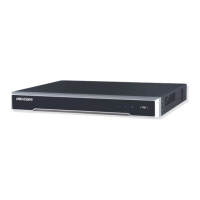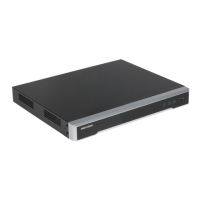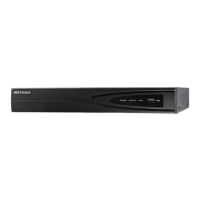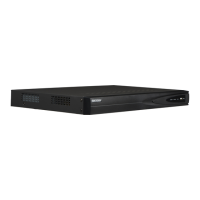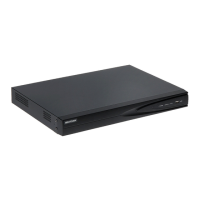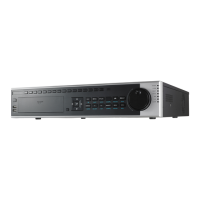Do you have a question about the HIKVISION DS-7604 Series and is the answer not in the manual?
| Compression | H.265+/H.265/H.264+/H.264 |
|---|---|
| Audio Bit Rate | 64 Kbps |
| Video Input | 4 channels |
| Video Output | 1 channel HDMI, 1 channel VGA |
| Storage | 1 SATA interface |
| Network Interface | 1 RJ45 10M/100M/1000Mbps self-adaptive Ethernet interface |
| Power Supply | 12 VDC |
| Encoding Resolution | 4 MP/3 MP/1080p/720p/VGA/4CIF/CIF |
| Audio Output | 1 channel |
| Dual Stream | Support |
| USB Interface | 2 USB 2.0 interfaces |
| Working Temperature | -10 °C to +55 °C (14 °F to 131 °F) |
| Working Humidity | 10% ~ 90% |
Details the key features and capabilities of the DVR, including compression and monitoring.
Details the functions of the DVR's front panel buttons, interfaces, and status indicators.
Describes the connectors and ports available on the rear of the DVR unit for various inputs/outputs.
Provides instructions for powering the DVR on and off correctly to ensure longevity.
Guides users through the initial DVR setup process, including essential configurations.
Details the procedure for setting the system's date and time accurately for event timestamping.
Describes how to control and navigate through live camera feeds using various input methods.
Guides on customizing display settings for video output modes and multi-camera layouts.
Outlines methods for setting up general recording parameters like resolution and bitrate.
Details how to set up daily or weekly recording schedules for cameras based on time.
Advanced configurations related to hard disk drive management, including redundancy.
Enables redundant recording across multiple hard drives for data safety against disk failures.
Overview of playing back recorded video files and the support for multi-camera simultaneous playback.
How to search and play back recorded files using specific criteria like date, time, and camera.
Instructions for backing up recorded video files to external devices like USB drives.
Steps to export selected recorded files for backup, transfer, or archival purposes.
Configures the DVR to trigger alarms or recording based on detected motion in camera views.
How to configure external sensor inputs to trigger alarms or recording events.
Configures the DVR to detect and respond to video signal loss from connected cameras.
Sets up the DVR to detect and respond to unauthorized tampering with camera views.
Configures alerts for various system exceptions like HDD errors or network disconnection.
Steps to configure network connectivity for remote monitoring and access.
Steps for connecting and configuring IP cameras with the DVR, including adding new channels.
Steps to prepare a new hard drive for use with the DVR by initializing it.
Creating, modifying, and managing user accounts and their permissions for system access.
Procedures for updating the DVR's firmware via USB device or FTP server.

